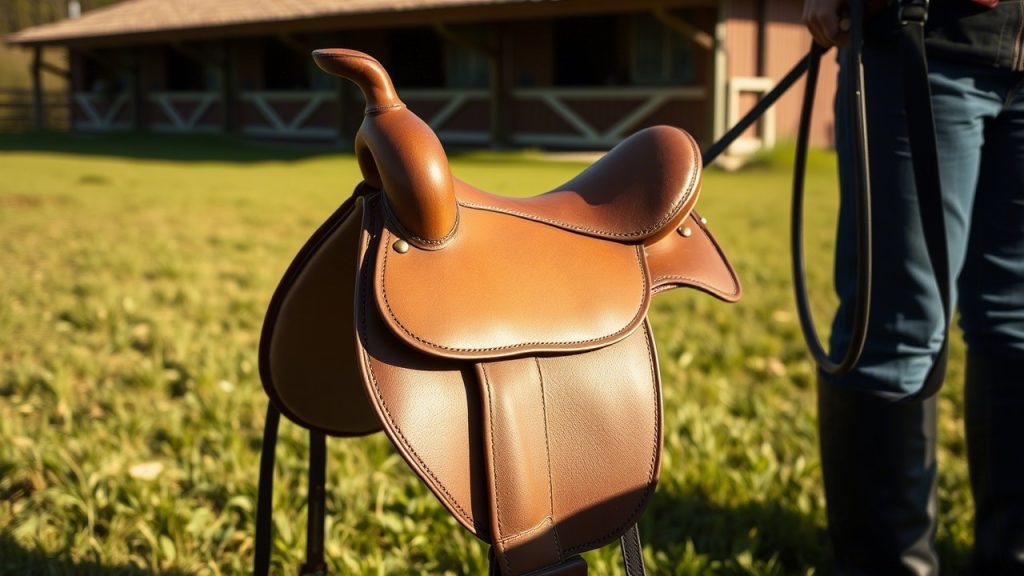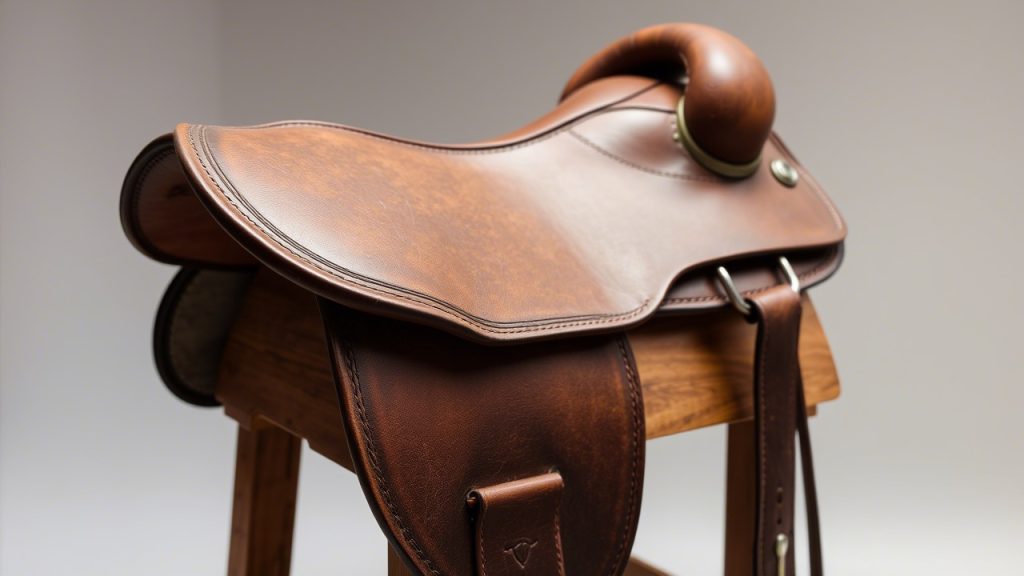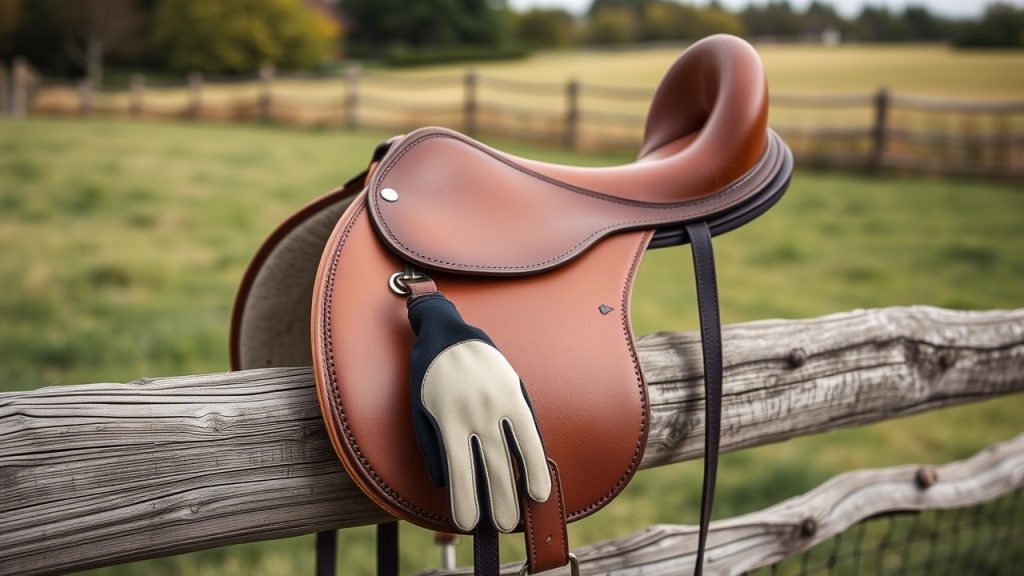A horse’s ability to move freely is essential for performance, comfort, and overall well-being, whether you’re training for dressage, jumping, or enjoying a trail ride. A poorly fitted or restrictive saddle can hinder a horse’s natural movement, causing discomfort and limiting their potential. The right saddle, however, can enhance a horse’s freedom of motion, allowing them to move with ease and confidence in as little as a week.
We’ve curated the 11 best saddles to help horses move freely in a week, focusing on fit, flexibility, and comfort. These saddles span English, Western, and treeless designs, catering to various disciplines and budgets. We’ll also provide a 7-day plan to optimize your saddle’s benefits and include 9 frequently asked questions to address common concerns. Let’s find the perfect saddle to unlock your horse’s full range of motion!
Why Saddle Fit Impacts Horse Movement
A saddle directly affects a horse’s ability to move freely by influencing their biomechanics and comfort. Here’s how a well-designed saddle helps:
- Proper Fit: A saddle that conforms to the horse’s back avoids pressure points, allowing unrestricted shoulder and spine movement.
- Flexibility: Flexible trees or treeless designs adapt to the horse’s motion, promoting natural gaits.
- Weight Distribution: Even weight distribution reduces strain, enabling fluid movement.
- Close Contact: A saddle that minimizes bulk enhances rider-horse communication, encouraging responsive movement.
- Comfort: A comfortable horse is more willing to move freely without resistance or tension.
By choosing one of the 11 best saddles to help horses move freely in a week, you can quickly improve your horse’s mobility and performance. Let’s explore our top picks.

How We Chose the Best Saddles
We evaluated saddles based on the following criteria:
- Fit and Adjustability: Adjustable gullets, wide trees, or treeless designs to accommodate various horse conformations.
- Flexibility: Trees or materials that adapt to the horse’s movement without restriction.
- Weight Distribution: Panels or cushioning systems that evenly distribute rider weight.
- Comfort: Features that ensure horse comfort, such as soft leather or breathable padding.
- Discipline Suitability: Saddles for dressage, jumping, trail, or endurance to support diverse movements.
- User Reviews: Feedback from riders on how the saddle enhances horse mobility.
- Price Range: Options from budget-friendly to premium to suit all budgets.
These saddles are ideal for riders seeking to enhance their horse’s natural movement, from casual trail riders to competitive equestrians.
The 11 Best Saddles to Help Horses Move Freely in a Week
1. Wintec Lite All-Purpose Saddle
- Price: $600-$900
- Discipline: All-purpose (English)
- Best For: Beginners and multi-discipline riders
- Why It’s Great: The Wintec Lite features a lightweight design with an adjustable gullet and CAIR cushion panels that distribute weight evenly. The synthetic material is durable and easy to maintain.
- Movement Benefits: The flexible tree and CAIR system allow unrestricted shoulder movement, promoting fluid gaits.
2. Bates Innova Mono+ Dressage Saddle
- Price: $2,500-$3,000
- Discipline: Dressage
- Best For: Dressage riders
- Why It’s Great: This saddle offers a deep seat and adjustable gullet, with CAIR panels and a flexible tree that adapt to the horse’s back. The luxurious leather ensures comfort.
- Movement Benefits: The flexible tree supports lateral and longitudinal movement, ideal for dressage.
3. Circle Y Missouri Flex2 Gaited Trail Saddle
- Price: $1,900-$2,300
- Discipline: Trail (Western)
- Best For: Gaited horse riders
- Why It’s Great: The Flex2 tree promotes gaited horse movement, while the padded seat ensures rider comfort. The lightweight design reduces strain on the horse.
- Movement Benefits: The flexible tree allows natural gaits, enhancing stride length and fluidity.
4. Pessoa Gen-X Elite Saddle
- Price: $2,000-$2,500
- Discipline: Jumping
- Best For: Show jumpers
- Why It’s Great: The medium-deep seat and AMS panels mold to the horse’s back, ensuring a snug fit. The forward flaps support jumping positions without restricting movement.
- Movement Benefits: The lightweight design and flexible panels allow free shoulder movement for jumping.
5. Tucker Cheyenne Frontier Trail Saddle
- Price: $1,800-$2,200
- Discipline: Trail (Western)
- Best For: Trail enthusiasts
- Why It’s Great: The Gel-Cush seat and flexible tree provide comfort and adaptability. The durable leather and wide tree options fit various horse breeds.
- Movement Benefits: The flexible tree minimizes restrictions, promoting natural movement on trails.
6. Antares Contact Monoflap Saddle
- Price: $4,500-$6,000
- Discipline: Dressage or Jumping
- Best For: Advanced riders
- Why It’s Great: This premium saddle features a monoflap design for close contact and a flexible tree that adapts to the horse’s back. The soft leather ensures comfort.
- Movement Benefits: The monoflap and flexible tree allow unrestricted shoulder and spine movement.
7. Collegiate Intrepid Event Saddle
- Price: $1,300-$1,600
- Discipline: Eventing
- Best For: Eventing riders
- Why It’s Great: The synthetic leather and adjustable gullet make this saddle versatile for dressage, cross-country, and jumping. The medium-deep seat supports multi-discipline riding.
- Movement Benefits: The adjustable fit and lightweight design promote free movement across disciplines.
8. Bob Marshall Original Treeless Saddle
- Price: $1,500-$2,000
- Discipline: Endurance/Trail
- Best For: Endurance riders
- Why It’s Great: This treeless saddle conforms to the horse’s back, offering unparalleled flexibility and close contact. Its lightweight design is ideal for long rides.
- Movement Benefits: The treeless design eliminates restrictions, allowing full range of motion.
9. Stubben Genesis Deluxe Dressage Saddle
- Price: $3,000-$3,500
- Discipline: Dressage
- Best For: Serious dressage riders
- Why It’s Great: The deep seat and flexible tree reduce pressure points. The wide tree options and soft leather ensure a custom fit and comfort.
- Movement Benefits: The flexible tree supports lateral flexibility, enhancing dressage movements.
10. Ansur Classic Treeless Saddle
- Price: $3,000-$3,800
- Discipline: All-purpose
- Best For: Multi-discipline riders
- Why It’s Great: The treeless design molds to the horse’s back, offering close contact and versatility for dressage, trail, or jumping. The padded seat ensures rider comfort.
- Movement Benefits: The flexible design allows unrestricted movement in any discipline.
11. Tex Tan Flex Trail Saddle
- Price: $1,600-$2,000
- Discipline: Trail (Western)
- Best For: Casual trail riders
- Why It’s Great: The flex tree reduces pressure points, and the padded seat ensures rider comfort. Its affordable price and durable leather make it practical.
- Movement Benefits: The flexible tree promotes natural movement, ideal for trail riding.

How to Help Your Horse Move Freely in a Week with Your New Saddle
A saddle designed to enhance horse movement can yield noticeable results in just a week with proper use. Follow this 7-day plan to optimize your saddle’s benefits and improve your horse’s mobility:
Day 1: Ensure Proper Saddle Fit
- Work with a saddle fitter to confirm the saddle fits your horse perfectly, checking for even weight distribution and clearance over the withers and spine.
- Ride at a walk for 20–30 minutes to assess the saddle’s feel and your horse’s initial response.
Day 2: Focus on Relaxation
- Ride at a walk and trot for 30–45 minutes, encouraging your horse to stretch and relax under the new saddle.
- Observe your horse’s movement for signs of ease or tension, ensuring the saddle allows free shoulder motion.
Day 3: Introduce Dynamic Movement
- Incorporate transitions (walk-trot, trot-canter) for 45 minutes to test the saddle’s flexibility during gait changes.
- Focus on maintaining a balanced seat to avoid restricting your horse’s movement.
Day 4: Assess Lateral Flexibility
- Practice circles, serpentines, or leg yields for 45–60 minutes to encourage lateral movement.
- Ensure the saddle doesn’t pinch or restrict during bends, allowing your horse to move fluidly.
Day 5: Test Extended Gaits
- Ride for 60 minutes, including extended trot and canter intervals, to evaluate the saddle’s impact on stride length.
- Work with a trainer to confirm your horse is moving freely without resistance.
Day 6: Refine Communication
- Focus on rider-horse communication for 60 minutes, using light aids to encourage responsive movement.
- Record your ride to analyze your horse’s gait and stride, ensuring the saddle supports natural motion.
Day 7: Evaluate Progress
- Plan a 60–90-minute ride incorporating varied movements (transitions, lateral work, extended gaits).
- Assess your horse’s movement compared to Day 1, noting improvements in fluidity and comfort. Consult your trainer or fitter if adjustments are needed.
This plan leverages your saddle’s design to promote free movement, helping your horse move with greater ease and confidence within a week.

Tips for Choosing the Right Saddle for Horse Movement
- Prioritize Fit: Ensure the saddle fits your horse’s unique conformation to avoid restricting movement.
- Choose Flexible Designs: Flexible trees or treeless saddles adapt to the horse’s motion, promoting natural gaits.
- Check Weight Distribution: Look for panels or cushioning that evenly distribute rider weight to reduce pressure.
- Consider Discipline Needs: Select a saddle designed for your discipline to support specific movement patterns.
- Test Ride: If possible, try the saddle to assess its impact on your horse’s movement before purchasing.
Additional Considerations for Enhancing Horse Movement
Beyond choosing the right saddle, consider these strategies to further support your horse’s mobility:
- Regular Saddle Fitting: Horses change shape over time, so check saddle fit every 6–12 months.
- Proper Warm-Up: Use stretching and warm-up exercises before rides to prepare your horse’s muscles.
- Rider Position: Work with a trainer to maintain a balanced seat, avoiding tension that restricts movement.
- Saddle Maintenance: Clean and condition the saddle regularly to ensure smooth surfaces and proper fit.
- Veterinary Support: Consult a vet or equine therapist if your horse shows persistent movement issues, as they may indicate underlying health concerns.
Frequently Asked Questions
1. How does a saddle help horses move freely?
A saddle helps by providing a proper fit, flexible design, and even weight distribution, allowing unrestricted shoulder, spine, and hindquarter movement for natural gaits.
2. Can a saddle improve horse movement in a week?
Yes! A well-fitted saddle with a structured riding plan can enhance a horse’s mobility and comfort within a week by reducing restrictions and improving communication.
3. Are treeless saddles better for horse movement?
Treeless saddles offer flexibility and close contact, allowing unrestricted movement. They’re ideal for many disciplines but may not suit high-impact activities like jumping.
4. How do I know if a saddle fits my horse for free movement?
A saddle fits if it sits level, clears the withers, and allows free shoulder and spine movement. Consult a saddle fitter to ensure accuracy and avoid restrictions.
5. What’s the best saddle for a budget-conscious rider to improve horse movement?
The Wintec Lite All-Purpose Saddle is ideal for budget-conscious riders due to its adjustable fit, lightweight design, and affordable price, promoting free movement.
6. How do I maintain my saddle to support horse movement?
Clean it regularly with saddle soap, condition leather saddles to keep them supple, and store it in a dry, cool place. Check for wear that could affect fit.
7. Can a poorly fitted saddle restrict horse movement?
Yes, a poorly fitted saddle can cause pressure points, pinching, or uneven weight distribution, restricting movement and causing discomfort or resistance.
8. Are English saddles better than Western saddles for horse movement?
English saddles are lighter and promote close contact, ideal for dynamic movements in dressage or jumping. Western saddles offer stability and flexibility for trail or gaited riding. Both can support free movement if properly fitted.
9. Why is a flexible tree important for horse movement?
A flexible tree adapts to the horse’s back during motion, reducing restrictions and allowing natural shoulder and spine movement, essential for fluid gaits.
Conclusion
Helping your horse move freely is key to unlocking their potential and ensuring their comfort, whether on the trail, in the arena, or during competition. The 11 best saddles to help horses move freely in a week—from the affordable Wintec Lite to the premium Antares Contact—offer flexible designs, proper fit, and comfort to enhance your horse’s natural motion. These saddles cater to every discipline and rider level, making them versatile tools for improving mobility.
To see results in just a week, choose a saddle from our list, follow our 7-day plan, and work with a saddle fitter to ensure a perfect fit. Combine your saddle with proper warm-ups, rider position, and maintenance, and you’ll notice your horse moving with greater ease and confidence. Saddle up and start your journey to freer movement today!





